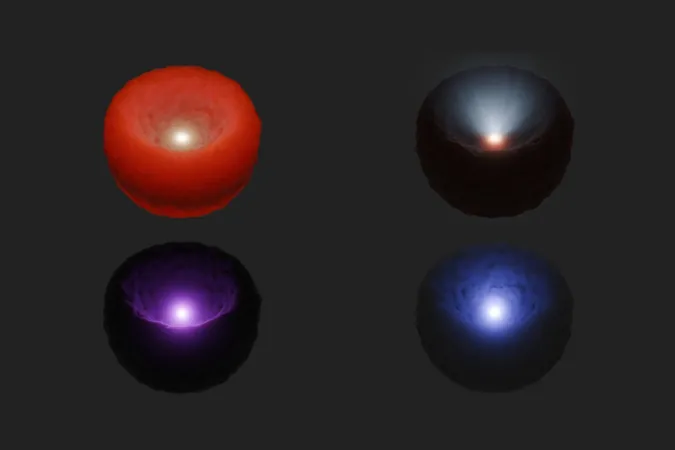
New Research Reveals a Hidden World of Supermassive Black Holes in Our Universe
2025-01-13
Author: Yu
Introduction
Are we living in the dark about the true number of supermassive black holes in the universe? Recent findings from a team of NASA scientists suggest that the cosmos may be hiding an astonishing number of these massive entities, potentially altering our understanding of galactic evolution.
The Significance of Supermassive Black Holes
Supermassive black holes can dwarf our Sun, reaching masses that are billions of times greater. The mechanics behind their formation and growth has puzzled astronomers for decades. Understanding these hidden giants is essential, as they play a significant role in shaping galaxies, including our very own Milky Way.
Characteristics of Black Holes
Here’s where it gets intriguing: black holes possess such intense gravitational forces that not even light can escape once it crosses a threshold known as the event horizon. However, the regions outside this deadly boundary can glow with intense brightness, primarily due to the superheated gas and dust swirling in an accretion disk around the black hole. Ironically, this material often blocks the light that would help scientists detect the black holes, making many of them nearly impossible to see.
Groundbreaking Findings
A groundbreaking study reveals that approximately 35% of the supermassive black holes examined are veiled by dense gas and dust, a significant increase from previous estimates that placed this figure at around 15%. This new discovery, published last month in *The Astrophysical Journal*, underscores the likelihood that a greater number of black holes exist than we previously thought.
Research Methodology
The researchers behind this finding utilized observations from NASA’s Infrared Astronomical Satellite (IRAS) and the Nuclear Spectroscopic Telescope Array (NuSTAR) X-ray observatory. IRAS specializes in capturing infrared light, a vital tool for spotting black holes based on their accretion disk emissions. The team was able to pinpoint hundreds of potential hidden black holes and subsequently used NuSTAR to validate the presence of edge-on black holes through X-ray emissions.
Expert Insights
Astrophysicist Poshak Gandhi from the University of Southampton shared insights on the significance of black holes, highlighting their vital influence on galaxies: “If we didn’t have black holes, galaxies would be much larger. If the Milky Way lacked a supermassive black hole, there might be many more stars in the sky.” This stark realization emphasizes how these cosmic giants shape their environments.
The Vast Influence of Black Holes
Moreover, the reach of black holes extends well beyond their immediate surroundings. In an exciting development reported last year, scientists discovered the largest-known black hole jets—enormous streams of particles emanating from these entities at nearly the speed of light. Named Porphyrion, after a giant from Greek mythology, these jets stretch at least 140 times the width of the Milky Way, showcasing the immense influence these objects can exert across vast cosmic distances.
Conclusion
What's more, this recent research not only identifies the stealthy nature of these hidden black holes but also hints that there could be countless more we have yet to uncover. The universe, it seems, is teeming with secrets just waiting to be revealed, potentially changing everything we thought we knew about cosmic formation and structure. As we continue to probe deeper into the mysteries of the universe, the question remains: How many more supermassive black holes lie in the shadows, waiting to be discovered? The quest for knowledge in the cosmos is unending, and the adventure has only just begun!
 Brasil (PT)
Brasil (PT)
 Canada (EN)
Canada (EN)
 Chile (ES)
Chile (ES)
 Česko (CS)
Česko (CS)
 대한민국 (KO)
대한민국 (KO)
 España (ES)
España (ES)
 France (FR)
France (FR)
 Hong Kong (EN)
Hong Kong (EN)
 Italia (IT)
Italia (IT)
 日本 (JA)
日本 (JA)
 Magyarország (HU)
Magyarország (HU)
 Norge (NO)
Norge (NO)
 Polska (PL)
Polska (PL)
 Schweiz (DE)
Schweiz (DE)
 Singapore (EN)
Singapore (EN)
 Sverige (SV)
Sverige (SV)
 Suomi (FI)
Suomi (FI)
 Türkiye (TR)
Türkiye (TR)
 الإمارات العربية المتحدة (AR)
الإمارات العربية المتحدة (AR)